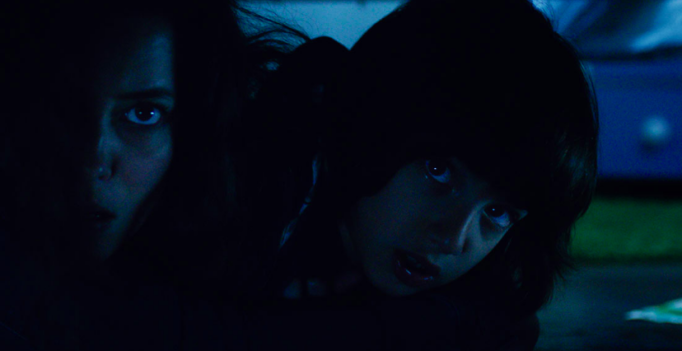Come Play feels like a natural throwback to traditional horror, where filmmakers build creative lore for a creature new to the genre. In this case, the monster is “Larry”: large, scaly, and looking for a companion. Larry zeroes in on Oliver (Azhy Robertson), a non-verbal outsider with Autism who struggles to make friends at school. We don’t know how long Larry has been observing Oliver for, but it must’ve been enough time for the creature to relate to the boy, and want to protect him.
Previously, in terms of establishing a new supernatural origin story, audiences have watched admirable attempts in 2017’s The Bye Bye Man, last year’s Brightburn, and on Netflix’s series Stranger Things. While those examples are fine, Come Play really nails its execution by providing enough motivations and a perfect amount of ambiguity to make Larry connect with movie goers while being excruciatingly ominous. The design lends itself to these qualities as well (the same way the final reveal of Cloverfield’s monster did), but the looming and deliberately vague presence of Larry, including how he’s summoned through an interactive storybook, makes the creature fittingly unpredictable. There are a few slip-ups based on how Larry protects and invites Oliver to his world. In a very clever SnapChat set-up, a jump scare looks as though Larry wants to eat Oliver. But, I’m willing to chalk this up to Larry’s awkwardness in how he presents himself to our world.
The film’s perspective is mostly seen from the eyes of Oliver. Marriage Story’s Azhy Robertson, giving an amazing performance, respects his character and excels at communicating through expressions and suppressed, exasperated panic. It’s a terrific showcase of what Robertson is already capable of as a young actor. Alongside him, Gillian Jacobs (I Used to Go Here) and John Gallagher Jr. (The Miseducation of Cameron Post) fit the bill as Oliver’s parents who feel as if they’re never on the same page with each other. These are the few instances that are not seen through Oliver’s eyes, but the change in perspective doesn’t feel out of place. Especially when Larry builds more of a connection with Mom, and the special effects become even more haunting.
In retrospect, Come Play shares a lot in common with the Guillermo del Toro co-produced thriller Mama. While both are based on pre-existing short films, the melancholic movies deal with an otherworldly presence that creeps on a family nearby in hopes to find a partner. But if Come Play’s writer/director Jacob Chase has been influenced by any of these movies I’ve mentioned in my review, he’s able to interpret these examples in exactly a way a filmmaker is supposed to do: use their loose ideas to launch new creativity.
An emotional and scary rollercoaster, I can’t think of a better movie to watch this Halloween than Come Play.
**********
Do You Tweet? Follow These Tweeple:
Addison Wylie: @AddisonWylie





Be the first to comment